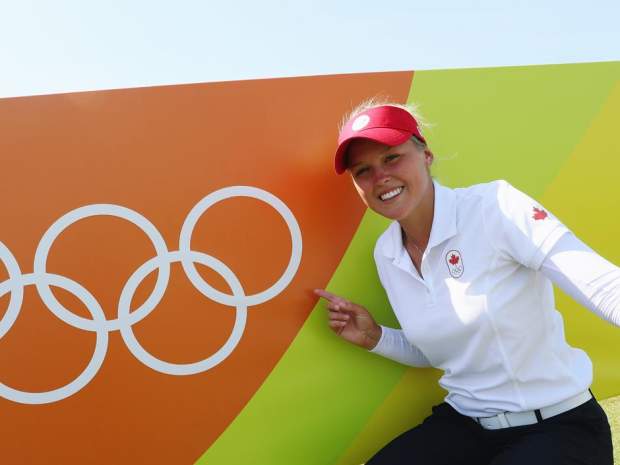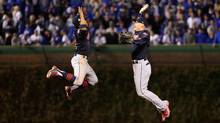Brooke Henderson’s Olympic Dream Realized not as a Goalie, But as a Golfer

RIO DE JANEIRO — Brooke Henderson didn’t need to be sold on the Olympics.
When she was growing up in Smiths Falls, both the Summer and Winter Games were appointment viewing in the Henderson household. She loved watching the athletes, watching them compete, seeing their passion for their sport. And she loved thinking, maybe one day.
The irony of all this is, until she hit her teens, Henderson’s best shot at making the Olympics was as the goalie of the Canadian women’s hockey team. But, on Monday, there she was in Rio, an Olympian, about to tee it up in the first ever women’s tournament and you didn’t have to probe too deeply to understand what this meant to her.
“I really didn’t know how I was going to become an Olympian,” Henderson said after completing a practice round with fellow Canadian Alena Sharp at the Campo Olimipico de Golfe. “I was just very fortunate that a few years ago golf was named back into the Games, and I’m just excited to be here. I know the Canadian women have been doing extremely well, and I hope to add to that medal count and I’m sure Alena does, too. I hope both of us are standing on the podium at the end of this.”
Henderson, the world’s No. 3, tees it up Wednesday as one of the favourites in the Olympic tournament, despite being just 18 and in her first full year on the LPGA tour. In 2016, she’s recorded two wins, including the KPMG Women’s PGA championship, has 11 top-10s and has basically established herself as a star on the circuit.
She also comes to Rio carrying the weight of expectations — and in the worst three-tournament stretch of her year. Since winning in Portland, Henderson finished 64th at the U.S. Women’s Open, 38th at the Marathon Classic and 50th at the Women’s British Open.
She followed the British with her first week off in two and a half months before attending a camp in Houston with Sharp and Tristan Mullally, the head coach of Golf Canada’s women’s program. The threesome then arrived in Rio on Saturday, in time to catch the conclusion of the men’s tournament and get in a handful of practice holes.
Henderson now says she’s ready for Rio. As for her workload this year, well, she doesn’t consider it work.
“I know a lot of people thought I was crazy playing that many weeks in a row, but that’s what I like to do,” she said. “I like to compete, I like to play in tournaments, and if I went home, I was just going to practice anyway, so why not test myself?”
Mullally first encountered Henderson at a Golf Canada camp when she was 13 and he isn’t surprised at her dedication or her stubbornness. Her talent, the coach says, was evident even then. But it was the way Henderson carried herself — like a 33-year-old and not a 13-year-old — that made the Irishman think she was a special talent.
“Every year when we set goals she broke them down pretty quickly,” said Mullally. “We were running out of goals.”
As for the Olympic prep: “We knew we had almost a two-week window between the British and playing this,” Mullally said. “We knew we were going to have a training camp. I thought that was really good preparation, having a little rest, practising at home, then moving on to this.”
On Monday, Team Canada put in a practice round that included a capybara sighting — “It looked like an 80-pound rat,” said Sharp — and a 60 km/h wind, which blew over the last couple of holes. That wind is the best defence for an Olympic layout that drew positive reviews from the men but yielded low scores.
As for the women, the best players in the world rushed to sign up for this event, largely because they’re aware of what Olympic-sized exposure can mean to their tour.
˚”We see it as growing the LPGA and the game,” said Sharp, the 35-year-old Hamiltonian and the 81st-ranked player in the world . “If we can expand here in South America that’s good for the tour and good for golf. I think we see it in different ways (than the men). We feel fortunate to get a new tournament so we want to give it all we have.”
That won’t be a problem for either of the Canadian players.
“They both want to be here,” Mullally said. “It wasn’t a pull. It was when are we meeting and what are we doing. They both have great attitudes about this. They both want to represent their country. They know how important it is.”
Especially for a young girl who dreamed of being an Olympian.








